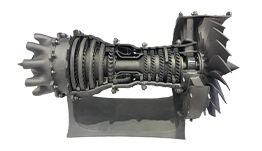3D Printing: The Key to Design Freedom and Sustainability in Smart Factories
Smart factories are the next generation of manufacturing, where digital technologies such as 3D printing enable more efficient, flexible, and sustainable production. In this article, we will explore how 3D printing, also known as additive manufacturing, can unlock new design possibilities and environmental benefits for smart factories.
3D printing is a process that creates objects by depositing layers of material on top of each other, following a digital model. Unlike traditional manufacturing methods, such as cutting, drilling, or molding, 3D printing can produce complex shapes and structures that are difficult or impossible to make otherwise. 3D printing can also reduce material waste, as it only uses the amount of material needed for the object, and can reuse the excess material.
By using 3D printing, smart factories can achieve greater design freedom and customization, as they can create products that meet specific customer needs, preferences, or functions. For example, 3D printing can create medical devices that fit the patient's anatomy, aerospace components that optimize aerodynamics, or consumer goods that express personal style. 3D printing can also enable more innovation and creativity, as designers can experiment with new forms, materials, and properties.
Moreover, 3D printing can enhance the sustainability of smart factories, as it can reduce the environmental impact of manufacturing and develop more eco-friendly products. For example, 3D printing can lower the energy consumption, carbon emissions, and water usage of production processes, as it eliminates the need for multiple machines, tools, and transportation. 3D printing can also create products that are lighter, stronger, and more durable, which can improve the performance, efficiency, and lifespan of the products.
However, 3D printing also poses some challenges for smart factories, such as the need for skilled workers, the protection of intellectual property, and the regulation of quality and safety. Smart factories need workers who can design, operate, and maintain 3D printers, as well as analyze and interpret the data generated by them. Smart factories also need to ensure that their 3D printing technologies do not infringe on the patents, trademarks, or copyrights of other parties, or expose their own trade secrets. Smart factories also need to comply with the laws and standards that govern the use of 3D printing, such as the environmental impact, the product quality, and the human-machine interaction.
3D printing is the key to design freedom and sustainability in smart factories, as it enables more efficient, flexible, and sustainable production. However, it also requires smart factories to address the issues of skills, security, and regulation. By embracing the opportunities and overcoming the challenges, 3D printing can help smart factories achieve their full potential in the digital age.
Recommended Products
Hot News
-
3D Printing: The Key to Design Freedom and Sustainability in Smart Factories
2024-02-05
-
How 3D Printing and Robotics are Transforming Smart Factories
2024-02-05
-
How UNITECH 3D PRINTING (DONGGUAN) LIMITED (Dongguan Huilichuang 3D Technology Co.,Ltd) is Revolutionizing the 3D Industry with Multiple Printing Techniques
2024-02-05
-
UNITECH 3D PRINTING (DONGGUAN) LIMITED (Dongguan Huilichuang 3D Technology Co.,Ltd): A Pioneer in Diverse 3D Printing Solutions
2024-02-05

 EN
EN
 AR
AR
 FR
FR
 DE
DE
 IT
IT
 JA
JA
 KO
KO
 PT
PT
 RU
RU
 ES
ES


